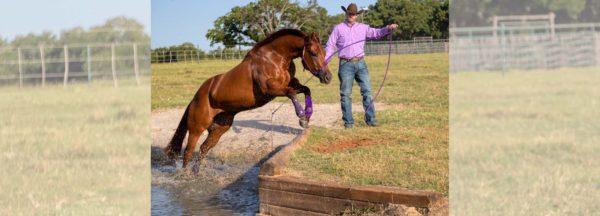Training Tip: Dial In Your Horse Right From the Start of a Training Session

Have you ever been working your horse in the arena or on the trail and cued him to do something only to have him ignore you and continue on as if you weren’t even on his back? Horses that ignore their riders can lead to dangerous situations.
Even when I put my horses on a loose rein, I want them to check in with me. Being put on a loose rein isn’t the signal for “check out and ignore Clinton;” it’s a reward for a job well done and a time to relax.
Your horse tuning you out doesn’t happen all of a sudden, it’s a tactic that he builds up to. It starts with him being lazy about how he responds to you and not putting in much effort. He gets away with the behavior, and he figures, “Hey, why waste any effort at all?” And some horses tune their riders out because they’re bored. We’re the same way. When we have to do the same thing every day or we’re made to do something we’re not interested in, it’s easy for our minds to wander.
You can stop your horse from tuning you out by keeping him engaged with you. You do that by moving his feet forwards, backwards, left and right. When you start a training session, you should have a set plan about what you want to accomplish with your horse. I do with my performance horses.
Each day, I have a plan—today I want to work on speed control, tomorrow I want to focus on stops, etc. At the start of each training session, I spend a good 10 to 15 minutes warming the horse up. It’s my chance to prepare the horse for the session, and it’s also a great opportunity to see where the horse is at mentally and physically for the day. Is he in a good mind frame? Does he feel off or sore?
Sometimes, even though I enter a training session with a set plan, depending on how my horse reacts in the warm-up, I change the plan to reflect what the horse needs that day. Just as much as you expect your horse to tune in to you, a good horseman tunes in to what his horse is telling him.
Have a horsemanship question or looking for more training tips? Check out the No Worries Club.
